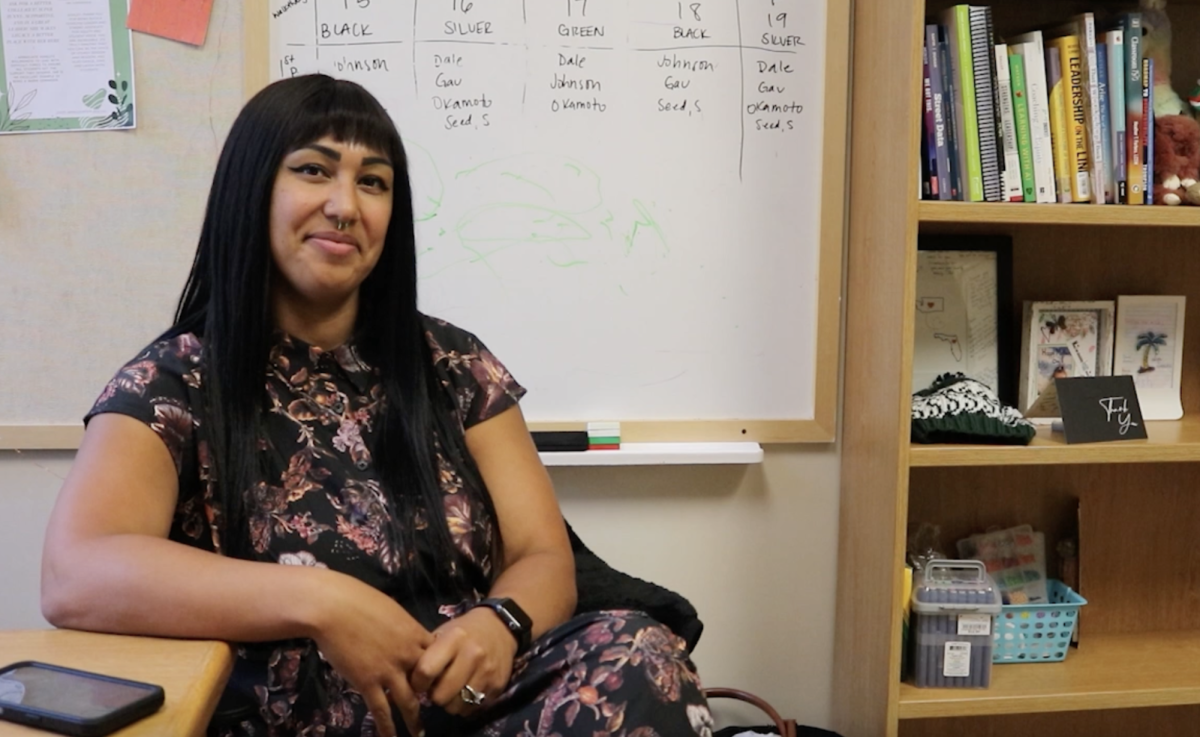Teens Talk Therapy
Kids are opening up about mental health and the ways they get treatment, what now?
It’s an interesting time to be alive right now. A global pandemic threw the world into isolation, political divides are harsher than ever before, the earth is (still) burning, news of mass shootings is becoming increasingly commonplace, and hey, what’s your screen time been like lately?
Uniquely fated to deal with the fallout of these issues is teenagers. Societal problems such as these are observed by adolescents in a tumultuous period of self discovery, leaving them especially vulnerable to damaging mental health effects. In 2021, the CDC estimated that one in seven 10-19 year olds experiences a mental disorder.
To handle their rapidly evolving mental states and surrounding environment, many teens have turned to therapy. In 2022, the American Psychological Association’s survey of mental healthcare practitioners found that the largest increase in patients was from adolescents aged 13-17. 46% of psychologists reported increases in adolescent patients over the last year, a greater percentage than any other demographic.
Teens are seeking help, and they’re talking about it.
In today’s high school classrooms, it isn’t uncommon to hear teens casually chatter about their last therapy session, or mention a mental illness that they’re working through. Of course, the stigma surrounding mental health issues still exists, but it is certainly easier for teens to be open with their peers about psychological treatment than it has been in the past.
Licensed counselor Leah Williamson was optimistic about this development, and added that it was important to end stigmatization in many other areas of mental health.
“There is a lot to be said for a shared experience and knowing that you’re not alone…we’re all in this place of a lot of collective trauma. We live in an environment that’s inherently not trauma informed and pretty challenging, I would say,” said Williamson. She added that it isn’t fair to compare ourselves to the “sick” environment we live in.
“I think that with more people talking about it, more people are understanding oh, this isn’t me, this is actually the system and part of the system.”
Williamson stated that being open about one’s experiences in therapy can help give hope among teens that healing is possible. Hearing people freely discuss their struggles and the steps they’re taking to cope makes mental health issues less shameful, and gives teens an approach to dealing with their own problems. Reducing the social stigma surrounding therapy can drive other struggling teens to seek the help they need.
“This is a big step in the right direction,” said Summit counselor Lori Craft, who noticed that over the years, teens have seemed to become more open to inquiring about counseling to help with their personal issues.
However, not all people view therapy in such a tolerant light.
“Going to therapy is seen as something you do when you’re sick or have a psychotic break. People think, ‘Oh God, if I go to therapy, I’m gonna be seen as insane. I’m gonna be judged.’ I’ve heard things around the school of people saying therapy is dumb,” said junior Anneli Bourque, the mental health coordinator for student council.
Bourque added that her grandmother viewed therapy as a kind of “psych ward,” which reflects a larger sentiment from older generations. In addition to grandparents, many parents restrict their kids’ access to therapy because of the misconception that therapy is for the severely unwell. Craft noticed that how a teen’s family perceives therapy plays a large role in whether a teen would be open to any type of counseling.
Summit junior Charlotte Lowery-North, who has attended therapy since she was in third grade, felt judgment from her family when she was originally starting therapy.
“At the beginning, my parents were against it because they felt like it was their fault,” said Lowery-North.
Parental willingness can create a large obstacle for teens looking to access therapy. This, combined with cost, can prevent counseling access for many.
“Cost is largely prohibitive, and that needs to change… it’s kind of like money stigmatizes everything,” Williamson said. “Oh, so you’re going to therapy. You must either not have any money and be on OHP (Oregon’s state Medicaid program), or you must have a lot of money. It puts you in those two groups immediately. Why does it have to be like that?”
Data from the 2020 National Survey on Drug Use and Health shows that teens from low-income households were least likely to receive mental health support—a troubling statistic, due to the fact that people living in low-income households are at greater risk for mental health issues. High treatment costs, limited insurance coverage, and lack of information surrounding available mental health resources keep low-income teens from accessing adequate mental health services.
“There is a whole aspect of mental health that is about social justice, and no one should be discriminated against based on their ability to pay,” Williamson asserted.
If society prioritized making therapy more accessible to all socioeconomic classes, a goal that all interviewees firmly believed in, real change can happen.
Teens especially have much to gain from the normalization and increased accessibility of counseling services due to their fragile position in life. Wendolyn Wirtz, another psychotherapist, reported that she has seen levels of emotional dysregulation, social disconnection and low self-worth increase in teens after the pandemic. However, she was quick to point out that she has seen new leaders emerge who are using these stressful situations for growth.
“From my experience in working with teens over several years, I believe that teens are under a much greater level of stress and pressure than ever before. At the same time, I have also seen a huge emergence of teens with an astonishing level of self-awareness and connection to greater consciousness,” said Wirtz.
“This combination requires new skills for emotional regulation and self-love, and in our culture, therapy is a great way to learn and embody these skills. Reaching out for support is strength.”
Both Lowery-North and Bourque expressed that they felt more in touch with who they were because of their experiences in therapy, and that was one of the biggest benefits for attending therapy for them. Bourque, who’s been going to therapy since she was in seventh grade, stated that therapy has helped her be able to articulate how she feels rather than holding it in.
“I found out a lot about myself. Not all good things, but it’s just shown me how complex a person can be, and how much you can change and mature when you’re going to therapy,” said Bourque.
In addition to (or as a result of) the amount of stress that teens are subject to in these times, comes a heightened sense of emotional intelligence and empathy. This greater self-awareness can lead to a chain reaction of sorts.
“As people learn more about themselves and learn that they are enough as they are, and worthy of love, they are able to share this with others and make a positive difference in the world, one person at a time,” said Wirtz.
Wirtz envisions a society in which teens are able to access mental health resources through schools easily. Ending a cycle of abuse and trauma starts with one person—or one generation.
“Without sounding too corny, I think shame and all of those really dark feelings that we have about ourselves only live in the dark, only live in secret,” Williamson said. “If we can bring ourselves to open ourselves up to people we trust, there’s a lot of healing in those places.”

Features Editor Jesse Radzik is just like your average grandmother, if said grandmother managed to avoid bone degeneration enough to play varsity tennis. She greatly enjoys reading in little nooks, doddering...




































Sharon Goodman • May 20, 2023 at 6:43 pm
So very interesting, and much to think about!! A wonderful piece of writing and intelligent, thought-provoking information. Thank you, Jesse!